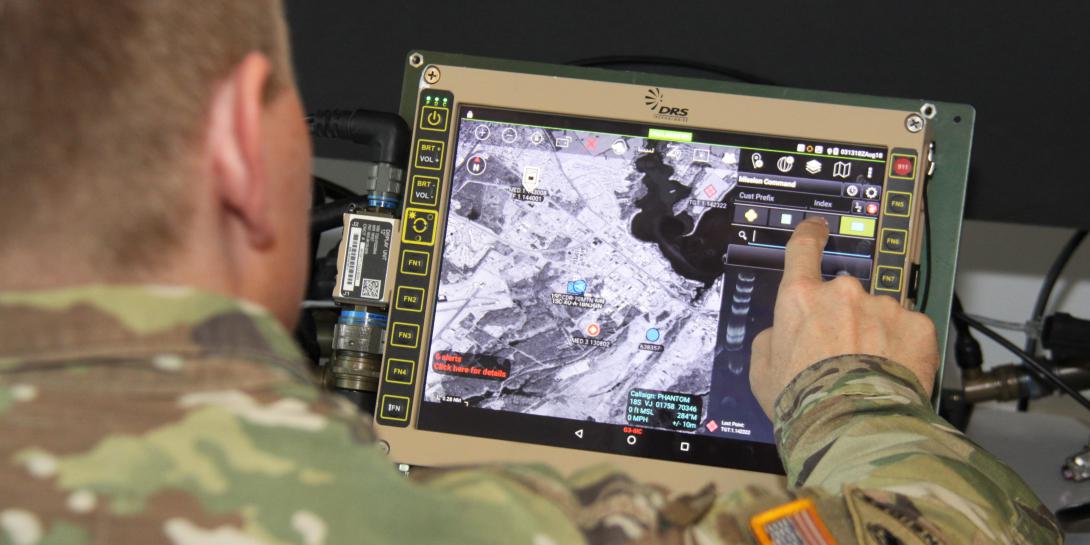Army Aims to Avoid Orphan Robots on the Battlefield
U.S. Army researchers are developing spectrum visualization technology that offers an array of benefits, including the ability to maintain contact with—and control of—remotely controlled vehicles on the battlefield.
Officials assessed the Network Coverage Overlay (NCO), which has been nicknamed “Nico,” during the recent Network Modernization Experiment at Joint Base McGuire-Dix-Lakehurst in New Jersey.
Originally, researchers developed the technology to maintain communications with dismounted soldiers. The technology improves network situational understanding of which units are within communication range by displaying radio coverage on a digital map within a soldier’s handheld device and within a tactical vehicle’s Mounted Family of Computer Systems. The application, which was developed by the Command, Control, Communications, Computers, Cyber and Intelligence, Surveillance and Reconnaissance (C5ISR) Center, factors in terrain, elevation and distance and can plot courses that will guide disconnected soldiers back into communications range.
Now it is being adapted to allow soldiers within a future combat vehicle to maintain a communications link with unmanned systems. Researchers with the C5ISR Center express concern that without a spectrum visualization tool, robotic systems will stray out of range of the communications link used to control them. Nico will allow soldiers to see where they do or do not have communications coverage, which will allow them to prevent pushing the robotic systems out of range.
“Today, the operators really operate the robot up until that link dies and when that dies, the robot becomes—the term is called orphaned—and that robot is now out in the middle of the battlespace potentially not being controlled,” Archie Kujawski, who leads the C5ISR Center’s Future Radio Concepts Team, explained to reporters during a telephonic media roundtable. “We saw that as a pretty big need to enable that link so that the robots would not become orphaned because the operators could see in the space that they’re maneuvering where they do have coverage area and where they do not have coverage area.”
The researchers recently integrated Nico into the Warfighter Machine Interface. It displays the degree of connectivity between systems using color-coded indicators, green, amber or red. “On top of this connectivity indicator, we plan to display a heat map that provides the estimate of the radio coverage based on the terrain and various elevation effects on the radio,” Jonathan Lee, Spectrum Research and Development Team leader at the C5ISR Center told reporters. “Then lastly, the ultimate goal is to provide a notification to alert the user of any link degradation between the radio comms.”
Officials describe Nico as having a wide range of applications. “The ability to understand what you look like in the [radio frequency] spectrum is foundational across multiple mission sets. When you look at a technology like Nico, it’s something that could help a dismounted soldier. It could help a mission command platform, say in a mounted vehicle. It could help in pre-mission planning at multiple echelons,” John Franklin, chief, Physical Layer Signal Processing Branch, C5ISR Center, told reporters.
Ultimately, even autonomous systems may use the Nico app. “Even an autonomy package may need some situational understanding of what its [radio frequency] coverage is in case it does need to call out at a given point,” Franklin explained.
The technology also could be used to allow one operator to better control multiple robotic systems, the researchers add.





Comments